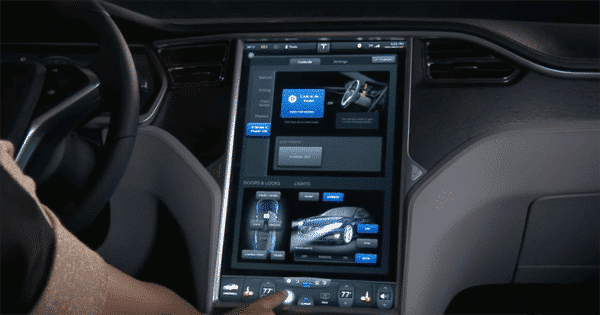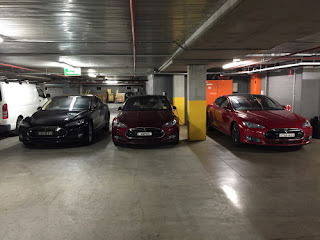King for a Month
The crazy, weird and utterly unbelievable life of the chief of a Big Oil refinery in some gawdawful place you would never choose to go
Chapter 1 - You Have Arrived
I did alternating 28 day tours in a Big Oil refinery somewhere in the world you would never normally choose to be. Where exactly? It doesn't really matter, the rebels lurking outside the compound walls were the same everywhere. Always trying to decide whether to extort the multi-national corporation through commerce or kidnap it's rich white execs so they can be ransomed back. And sometimes working both angles.
I had done plenty of international travel both with work and for pleasure. Europe was my favorite. Still is. But giant, complex, poisonous refineries are not located near quaint European towns. And the biggest ones, the one I worked at, were often built as far away from humans as practical. When you accidentally spill poisonous gas from a major installation you want the H2S (Hydrogen Sulfide?) to kill as few people as possible. So I had to venture to some pretty strange, remote and hostile places to be king.
The first time I arrived at one of these remote refineries I was flown in by private plane. It was definitely the weirdest and most frightening experience of my life. A twin engine prop plane that just did the hop from the international airport to the refinery. A dedicated flight that wouldn't surprise me if the company owned the plane. And the pilot. But that was after being separated from the masses upon arrival at the airport by a contingent of armed guards. Hired locals tasked with getting us from the international airport terminal to the company-owned hotel nearby without any one of the privileged, mostly white, senior execs getting kidnapped or shot along the way. You would be surprised what a Corporate Oil Company will pay to retrieve their captured manager. The cost is all covered by insurance of course, but the stigma of losing an exec in a situation like that makes future hiring much more difficult.
On this occasion it was a full flight and I was the last one on so I got seated in the "extra" seat. We didn't have a co-pilot as it turned out so end up next to the pilot wearing the headset that allowed me to listen to the ATC and communicate. This is definitely the sort of thing I like, so I was thinking "This is cool."
We take off and I'm enough of a geek that I start tracking our progress on a Google map - Satellite mode. But right away I see us travelling away from the refinery compound. I wait but our course doesn't change. After a while I ask the pilot "Where are we going? Isn't the refinery that way?" I ask.
"Yeah" he says. "But we have to approach from this direction" motioning on the map out on the ocean.
I watch as we loop waaaaay out and around over the water taking the most indirect route possible from the airport to our destination. Once out over the water we bank left and are finally headed directly into our destination. We fly low over countless oil platforms flaring off natural gas, like a post-apocalyptic scene from a Blade Runner movie.
"Okay" I was thinking. I guess there is a reason for this. Then the pilot looks over to me and points off ahead to my right, into dense jungle.
"The local Warlord controls all that area. And that area over there too" He points to the left. Basically on both sides of where we were headed.
"Oh..."
"Did you say 'Warlord'?"
"Yeah" he says. "We buy our toilet paper from him. And a bunch of other stuff. Anything we might need really, we can get from his crew. We kind of have to buy from his crew. His people basically. It's an arrangement that works" He says, bobbing his head up and down. "Until we get in dispute, then things can get a little weird. But right now things are good."
I'm not sure what is going through my brain at this point. He definitely said Warlord. More than once. What did he mean by "His crew"? And more importantly, where the hell was I going? As we got closer I could see the walls of the compound come into view. Wow, those are high walls. With razor wire across top. And is that a strip of the same running along the wall halfway up? What is that, double protection? I decide not to ask.
We land. But not heading straight into a runway from far out. I couldn't even see the runway on the heading we were on. Where the hell are we supposed to land? I figured it would become clear as we got closer. It didn't. The pilot looked over at me and saw the concern on my face. "We land over there" he says with a wide swooping hook motion of his right hand. That did not help my anxiety at this stage. "You can't even see the runway" I'm thinking. Oh, great. I look around for something to hold on to,
We land. Wide swooping turn to the right and drop out of the sky like Tom Cruise is directing the action. Okay, I've actually experienced worse on a commercial flight so this pilot immediately leaps in my respect. "Thank you" I stutter as I fall awkwardly out of the co-pilot's seat looking 100% like I had never done that before. And feeling far more concerned about where I had just landed than what people were thinking.
“You have arrived” our pilot says with the biggest shit-eating grin I have ever seen.
Chapter 2 - Status
It's all a bit awkward at first. Each person not quite sure who the others are, and importantly what their status is. Like any community of people these facilities naturally develop hierarchy. It can be as simple as those with certain status have access to specific areas of the plant where others do not. Or enjoy privileges such as better food, accommodation and transport. Regardless, it becomes clear who has status and who doesn't often by the way you arrive at the facility. My ride in to one particularly remote location demonstrated that quite clesrly. While the plebs were loaded onto a train for a 6 hour journey into this one location, I flew across with other execs in just 45 min via private plane.
So when the plane ride from hell discourages its passengers onto the tarmac in the middle of this hostile jungle we all essentially have the same status at this point. We are immediately directed into a nearby building for the standard safety briefing. These are normal in every facility and everyone had been through it before. This alarm means fire; this other nastier sounding alarm means gas leak (they don't say "poisonous gas leak" but they don't have to). But this time we get more. This unique blaring alarm, continues our host, means we have an armed insurgency.
"What did he just say?" I turn to the person beside me.
"Shhh!" I'm waved off by someone with an equally concerned look on their face trying to measure the gravity of what we are being told.
"Go immediately to one of these rooms marked in yellow." They are located around the compound in locations designed to reduce the likelihood of bullets penetrating. This was followed by a discussion about the path of bullets, how to minimize casualties and ended with the specific instructions to "Lie face down and Do Not Lift Your Head. At all. Ever. Or, until someone comes in and gives you the all clear."
If that briefing was supposed to scare the hell out of us, it did.
Then, as we leave the briefing room the person in charge of the whole refinery comes out to greet us. This rotation's King for a Month. Everyone can tell this person has status. People noticeably stiffen as he arrives surrounded by a contingent of armed security. But not me. I know this guy from years back and so he strides across the open plaza that is the main common area of the compound and comes right to me.
"Daaaave! How're you doing? It's been too long..." Backslaps and handshakes then he steers me off to one side, peeling me away from the group and we walk off with my old friend telling me "I've got something to show you."
I look back over my shoulder and see the contingent of security, briefing personnel and new arrivals left gawking at us with befuddled looks on their faces. It was clear some formal introduction process was about to take place where everyone's "status" would be established. Mine was pretty clear at this point and I could see the locals looking at me differently.
Edward takes me back to his office. More of bunker really, deep inside the facility protected by multiple layers of security from people to large steel doors. Once inside he pulls out a rare bottle of single malt whiskey, something he knows I like because we bonded over plenty of bottles in the past but particularly when we worked together in Scotland early in our careers. It is unopened of course and remains so because even though he is King for a Month, no alcohol is permitted while you are in that role. A painful sacrifice but something we tend to make up for during the 28 days when we are not King for a Month.












